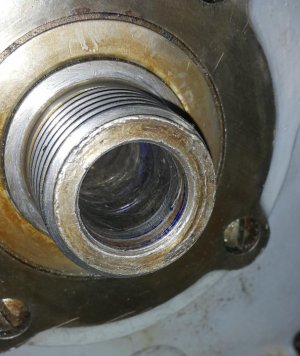I have a new to me Logan 1825. The spindle taper is pretty badly scarred up, a collet fixture has .002" runout, as does a dead center. Using a chuck on the threads seems workable. Tell me how bad this is and should I learn to work around it (eg., turning my own centers) or consider having it ground. I may want to use collets on this in the future, but I could probably use a threaded ER chuck rather than the drawbar type. I do mostly small diameter turnings in less demanding materials, but need the length of the bed and tolerance of no more than .001"



